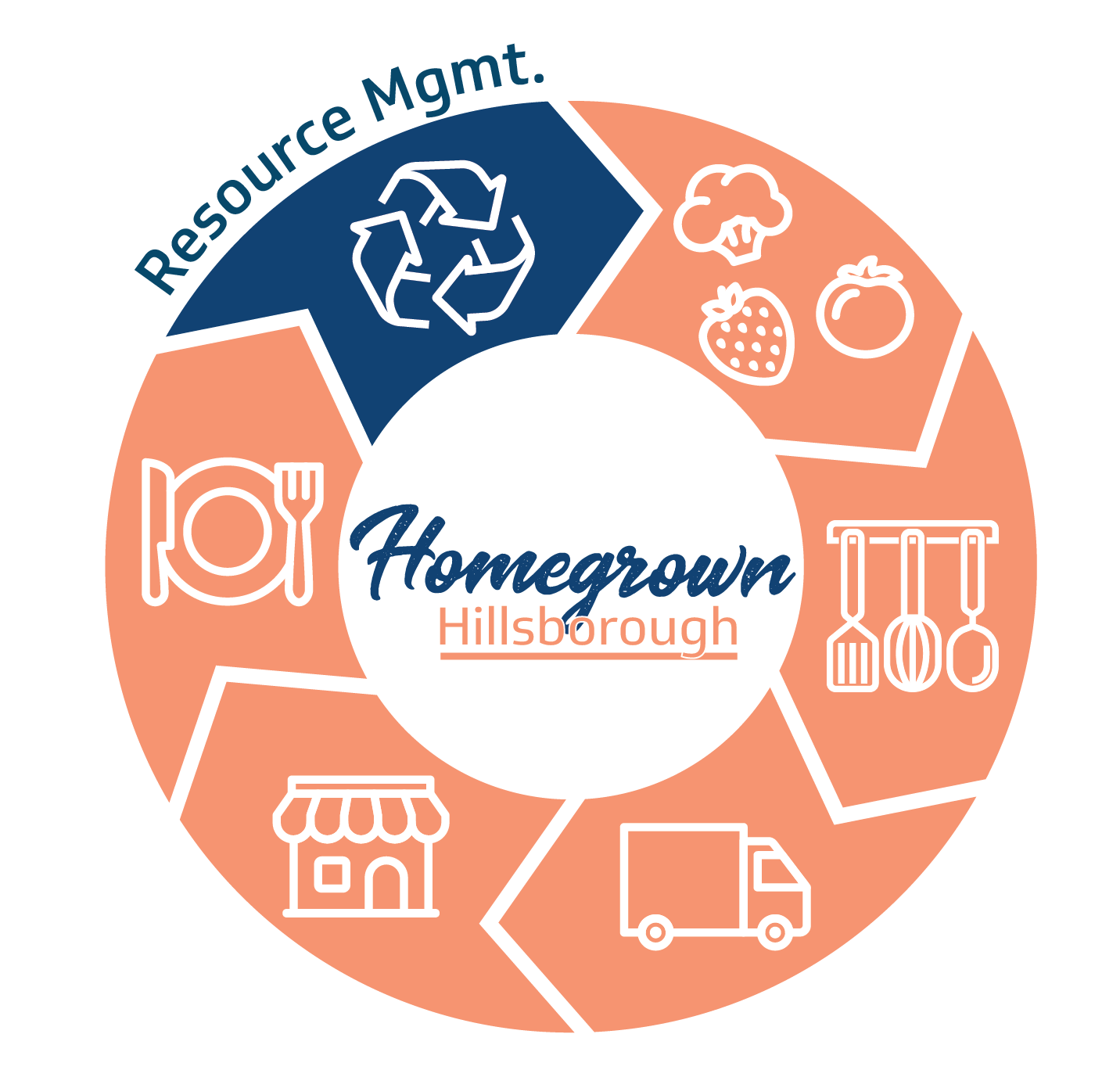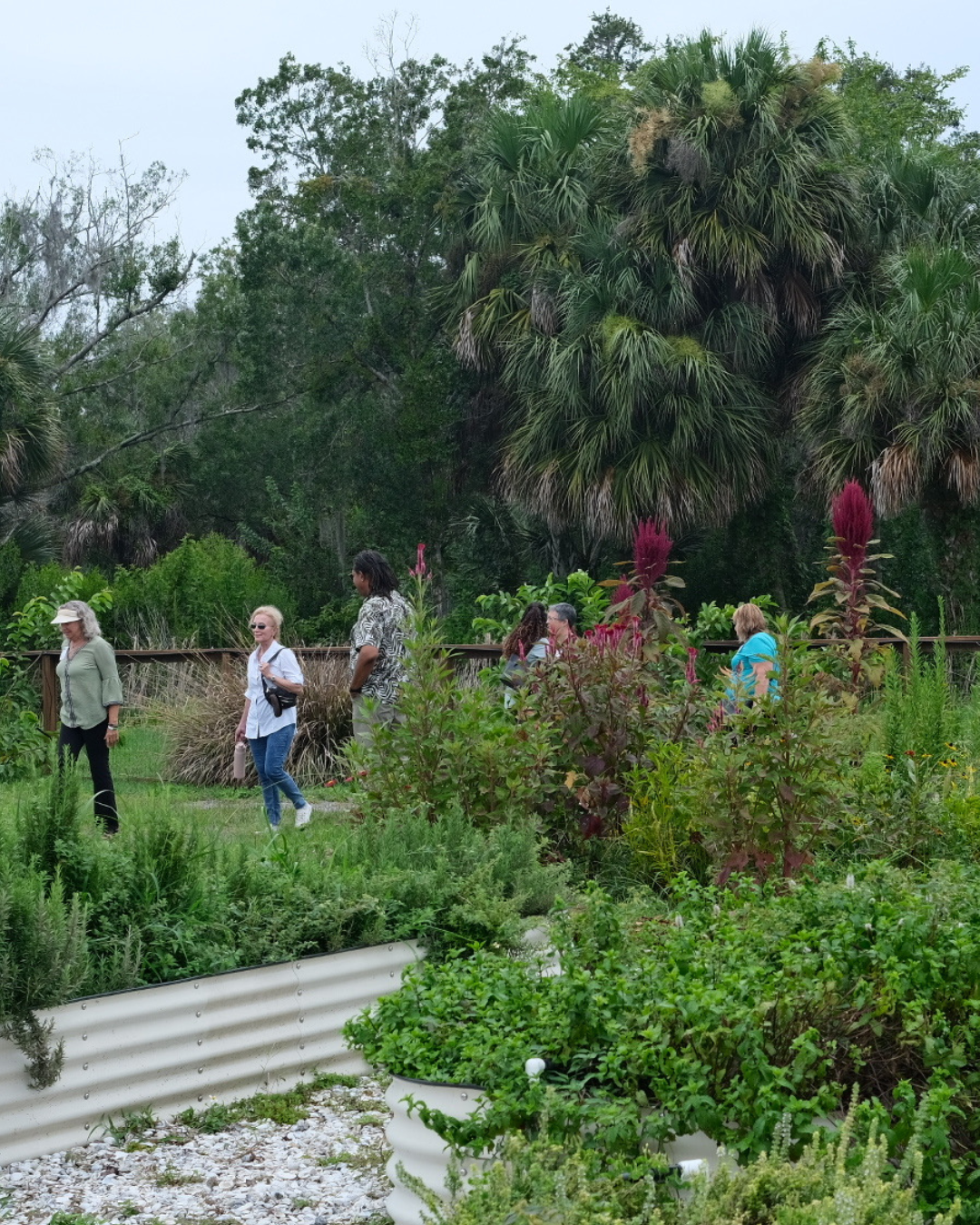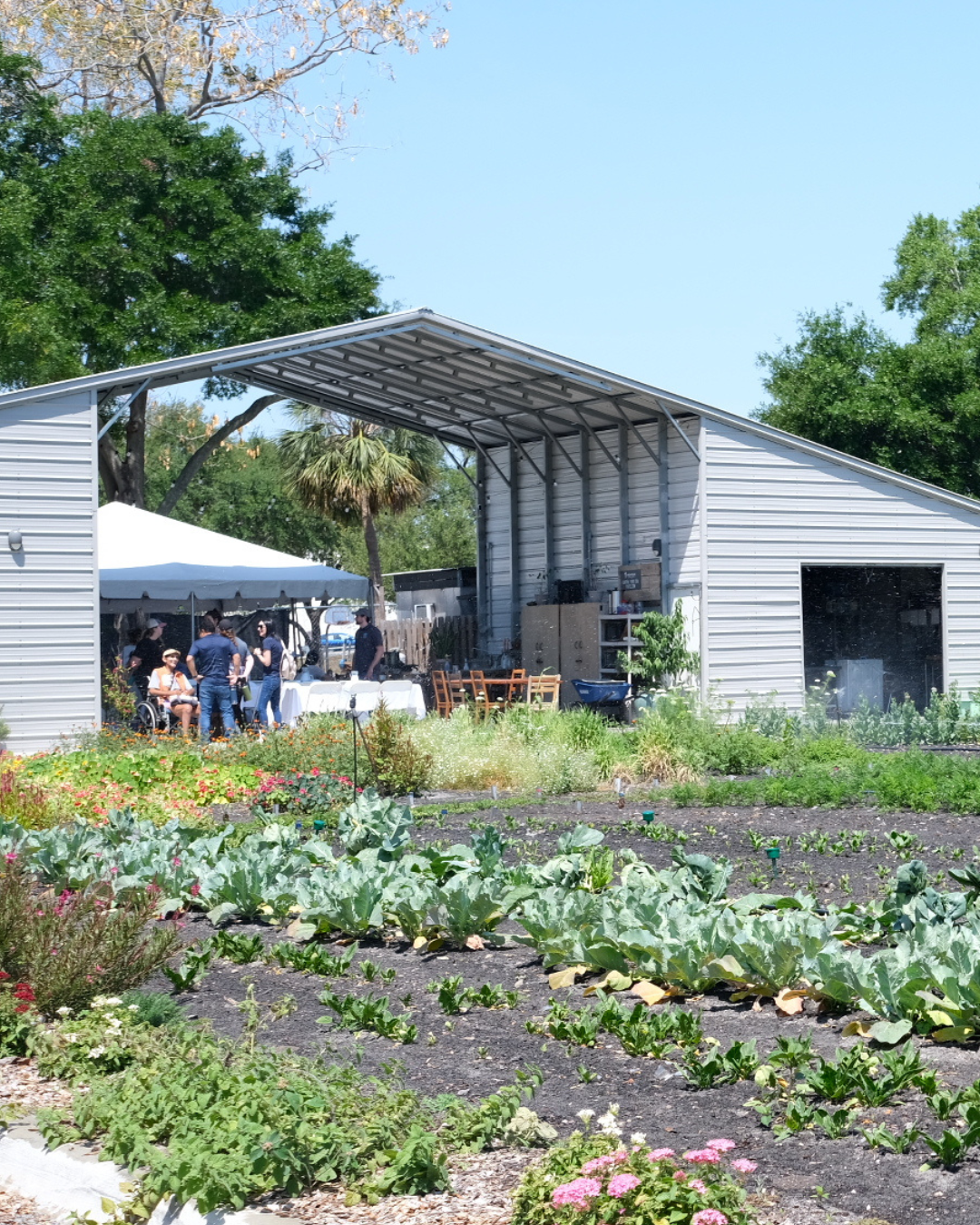
Resource Management
A food system includes all the processes and infrastructure involved in feeding a population, as depicted in the sectors below. The Food System Wheel is Homegrown Hillsborough’s depiction of the interconnected aspects that influence nutrition, food, health, community development, and agriculture.
Resource Management is the use and preservation of natural resources such as land, energy, and water.

Resource Management:
Key Concepts
-
The Sustainable Development Goals (SDGs) are a set of 17 global objectives established by the United Nations to address pressing social, economic, and environmental challenges, aiming for a better and more sustainable future for all by 2030.
-
The process of recycling organic waste, such as food scraps and yard waste, into a nutrient-rich soil amendment.
-
An economic system aimed at eliminating waste and the continual use of resources through reuse, repair, refurbishing, and recycling.
-
Integrated resource management, or IRM, is an approach that optimizes the use of interconnected resources, such as water, land, and energy, to minimize environmental impact. Key points are that IRM connects different resource uses, engages multiple parties, and promotes the long-term health of ecosystems.
-
The assessment of the environmental impact of a product throughout its life cycle. LCA helps identify opportunities for improvement and supports sustainable decision-making.
-
Items intended to be disposed of immediately after use, such as plastic and polystyrene food and beverage containers, bottles, straws, cups, cutlery, and disposable plastic bags. Increasingly, they are produced and used globally as packaging.





